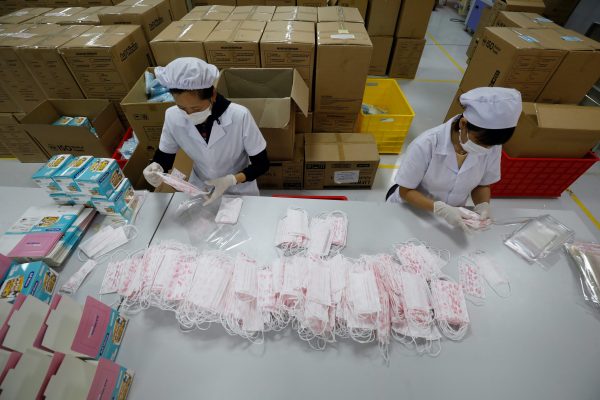Vietnam was quick to implement World Health Organization (WHO) recommendations, and its infection-control strategies have been for the most part comparable to other countries: isolating infected people, contact tracing and quarantine, social distancing and suspension of entry for all foreigners. But one area where Vietnam has always stood out is in the early widespread practice of mask-wearing.
The WHO did not support mass masking in the early stages of the pandemic but updated its guidelines on 5 June to encourage the practice in specific settings as part of a comprehensive control approach.
Wearing masks in public has long been common practice in Vietnam with the aim to protect oneself from ultraviolet light and pollution. The practice has been compulsory on public transport since 21 February and in public spaces including supermarkets, airports and stations since 16 March. Non-compliance is punished with a VND 300,000 (US$13) fine. Although social distancing requirements have been gradually relaxed since 23 April, mass masking and hand hygiene remain compulsory, encouraged by education campaigns and fines.
Vietnam’s approach is supported by increasing evidence of the effectiveness of using masks in the community. There is also no evidence that the practice is ineffective or harmful and mounting affirmation that masks are more effective than hand hygiene alone, with both together providing the most protection.
Mass masking addresses what seems to be the most difficult source of infection to control — patients who are unaware they have the disease. COVID-19 can be transmitted during the approximately 14-day incubation period before symptoms develop, as well as by patients who develop no clear symptoms.
Vietnam’s policy also requires all inbound and outbound passengers and cabin crew to wear face masks during flights, as COVID-19 is easily transmitted in enclosed spaces such as aeroplanes. With many countries now planning to resume international travel, mass masking while travelling could help with source control and offer some protection to those at risk.
Being a physical barrier, face masks can also remind the community not to touch their faces. This effect is particularly important once social distancing rules are lifted and people begin to feel that there is no more risk of acquiring COVID-19 in the community.
The two main types of masks are cloth and surgical, of which the former is less effective but more economical and sustainable. To ensure adequate supply of surgical masks for healthcare workers, all types of face masks — including cloth masks — should be encouraged for use in the community.
To ensure adequate supply and quality of face masks, Vietnam has encouraged domestic production, required licenses for their export and issued new standards for their design. Like Vietnam, other countries where mass masking is encouraged — such as China and Japan — have been successful in controlling COVID-19. Although this success is multifactorial, mass masking may have played an important role.
Cultural and personal experience can influence how receptive the community is to new ideas and practices, and the widespread acceptance of compulsory mass masking in Vietnam is grounded in the community’s prior experience with them. Vietnamese people are used to wearing face masks to protect themselves from the environment and the pandemic is one more reason to do so — 91 per cent of Vietnamese now wear face masks.
In Western countries, a common perception was that masks are only for those who are sick and their caregivers. This may be changing, with countries such as Germany, France and Italy and others gradually issuing advice to wear masks in public.
Since there is a lack of both cultural and personal experience regarding face masks in Western countries, it is pivotal that they encourage their use through community education. To maximise the effectiveness of mass masking, community education should also focus on correct usage and emphasise the concurrent use of face masks with other preventive measures.
Minh Cuong Duong, a physician and epidemiologist, is an Associate Lecturer at the School of Public Health and Community Medicine, the University of New South Wales, Sydney.
This article is part of an EAF special feature series on the novel coronavirus crisis and its impact.

